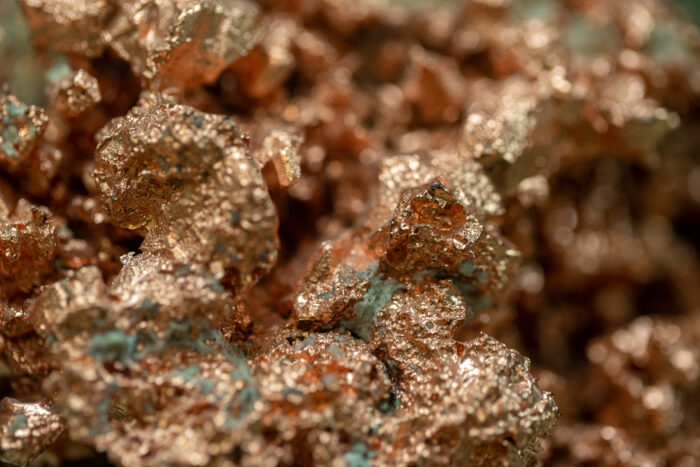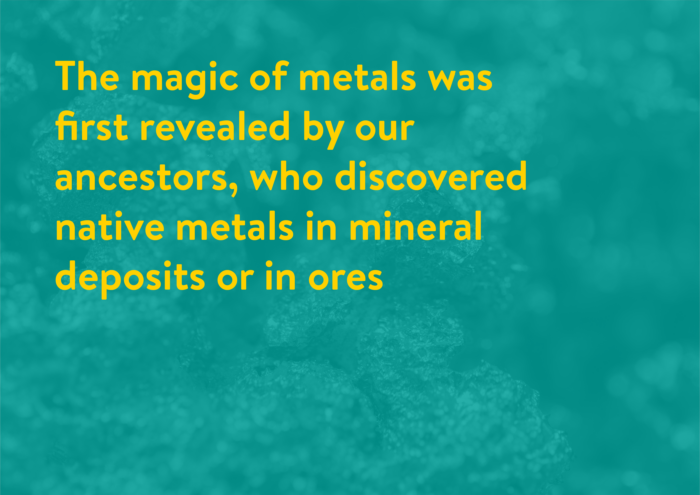This website uses cookies so that we can provide you with the best user experience possible. Cookie information is stored in your browser and performs functions such as recognising you when you return to our website and helping our team to understand which sections of the website you find most interesting and useful.

Why metals are special: magical materials
Metals: Pioneering Materials
The magic of metals was first revealed by our ancestors, who discovered native metals in mineral deposits or in ores. The colours and shapes of native metals would change with time, leading to the belief that they contained mystical properties. Native copper, for example, is a red-brown metal that changes into a green-blue colour when exposed to the environment. Although this process is now known as oxidation, in the eyes of our ancestors this might have been seen as magical!
Metals also seemed magical in other ways. Humans have used fire for warmth, light, protection and to cook for millennia. By adding certain coloured rocks to a fireside, it was possible to create a shiny fluid with the heat, that formed a new shiny solid when cooled. This accidental melting of native metals could be compared to the later development of alchemy, whereby practitioners attempted to turn common materials into rarer ones such as gold.

Native copper seen in its pure form

Due to their shiny appearance, metals such as native silver and gold were originally used for decorative purposes. Even today, some metals are still used as a display of wealth and as symbols of status. The earliest evidence of native metals used for decorative purposes is recorded in the archaeological record from around 10,000 BC (about 12,000 years ago). From around 8,000 BC (about 10,000 years ago) native metals such as copper, silver or gold started to be extracted by applying heat to their ores, a process that we now call smelting.
Metals were also durable materials. Items made of metal would last longer than items made from other materials like wood and stone. However, the skill of metal production remained rather difficult to master and for thousands of years metal goods would have been luxury items and mysterious objects to many.
Footnotes
1. A native metal is a metal found pure in its metallic form. Native metals can be found as single deposits or in a combination with another metal (which creates an alloy).
2. Ore is natural rock from which a metal or mineral can be extracted. Copper, gold, and iron are all extracted from ores.

